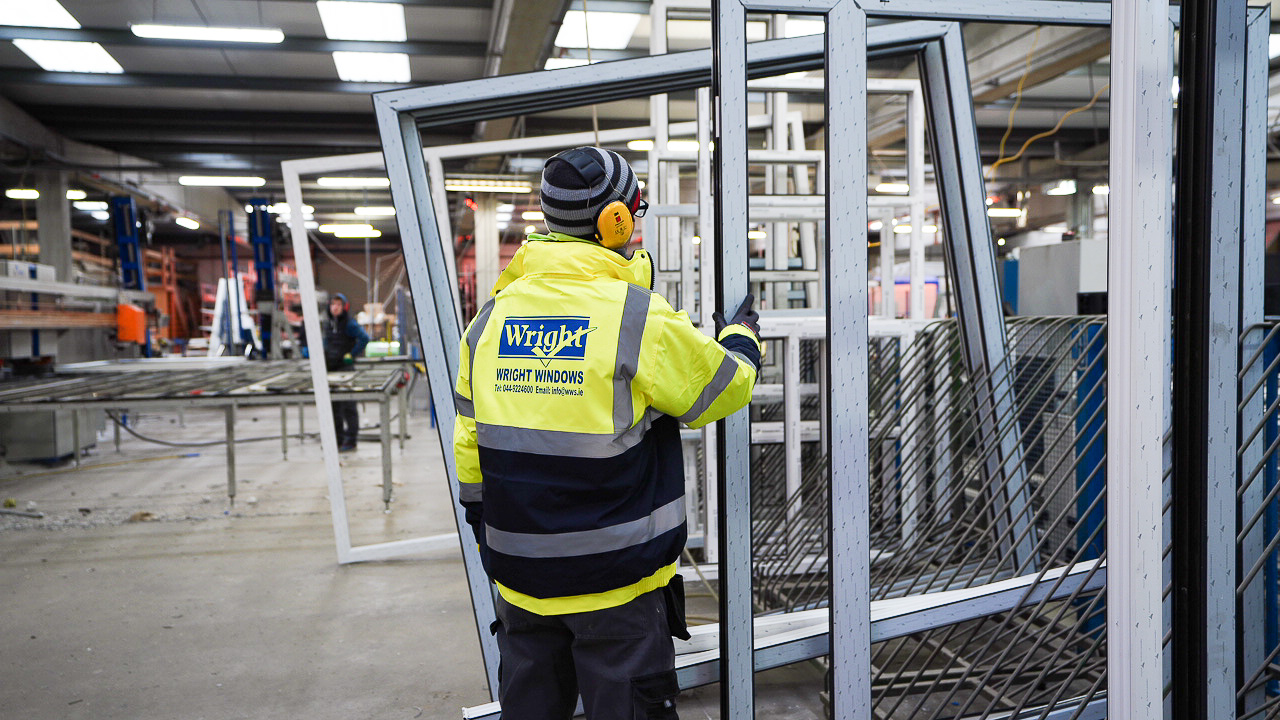Condensation is the water which results from the conversion of water vapour in the atmosphere.
The air which surrounds us in our homes always contains water vapour, which is usually invisible. A typical example is the steam cloud from a kettle, which rapidly becomes invisible – it has in fact been absorbed into the atmosphere.
The warmer the air, the more water vapour it can hold – but there is a limit to the amount it can hold for a given temperature. When that limit is reached, the air is said to be “saturated”. When saturated air comes into contact with a surface which is at a lower temperature than itself, the air is chilled at the point of contact and sheds its surplus water vapour on that surface – initially in the form of a mist and, if excessive, eventually in the form of droplets of moisture. An example of this is when a person breathes onto a mirror: condensation occurs because the exhaled air is saturated and its temperature is higher than that of the mirror (which is at room temperature).
The three main factors governing condensation are:
- Water vapour content of the air.
- Inside room temperature.
- Outside temperature.
The first two factors are normally controllable.
1. Water vapour content of the air
This is produced by normal living activities such as washing, cooking, bathing, etc., and can be controlled by the use of extractor fans, cowlings, and ventilation at appropriate places.
2. Inside room temperature
This can be controlled by replacing single glazing with double or triple glazing, or by slightly increasing the temperature of your central heating. The increase in air temperature enables it to hold more water vapour without condensing.
3. Outside temperature
This cannot be controlled, but it can be countered when it falls by increasing the indoor heating.
Condensation appearing on the outside of the windows typically occurs on new windows with low-e glass and actually means that the windows are performing as they should be. The low-e coating reduces heat loss through the glass so there is less heat warming the outer pane of glass. In certain weather conditions, i.e. raised humidity, moisture in the air will condense on the outer pane of glass. If it occurs, homeowners should not be too concerned as it will not happen regularly and is not indicative of a problem with the windows.
This is a common assumption but, unfortunately, it is also incorrect. Windows cannot and will not produce any water. This ‘water’ is produced by our normal living activities, such as breathing (2 sleeping adults produce 1 ½ litres of moisture in 8 hours), cooking, bathing, etc.
This type of condensation can be reduced by simple measure such as increased ventilation or a small increase in the air temperature within the house.
Moisture in the cavity of a glass unit denotes a failure of the glass unit, and it should be replaced with a new sealed unit.
Low-emissivity glass (or low-e glass as it is commonly referred to) is a type of energy-efficient glass designed to prevent heat escaping through your windows. Low-e glass has an invisible coating which reduces the emissivity of the glass, which reduces heat transfer and reflects heat back into your home.
The U-value of windows measures the rate of heat transfer through a product. The lower the U-value of a window, the lower the amount of heat loss, and the better a product is at insulating a building.
Wright Windows offers a range of products with NSAI-certified u-values from 1.4 to as low as 0.8.
Modern double or triple-glazed windows will be more effective than old draughty or single glazed windows at reducing the level of noise coming from outside. In addition, Wright Windows offer enhanced noise reduction options such as different thickness glass panes and the use of laminated glass. This cuts down noise transfer, so you hear less noise inside your home, for a more peaceful, relaxing lifestyle!
We offer a selection of windows and doors in Pvc, Aluminium, Aluclad, Timber, as well as our R9 Legacy Composite range.
We have a wide range of products on display at our extensive factory showroom in Milltownpass. Why not make an appointment to meet with one of our Sales Representatives in the showroom? He can talk you through the alternatives and help you to select the product that is best suited to your requirements.
Our showrooms are open 9.00am to 5.00 pm Monday to Friday. However, we appreciate that these times do not suit everybody. If not, please let us know and we will arrange for one of our Sales Representatives to meet you out of hours or at weekends.
A lift and slide door works similar to a traditional sliding door with the exception that when the operating door panel is engaged it is raised up onto rollers from the locked position in order to slide with ease. Essentially, the door is either lowered into a locked position or lifted up into a sliding position with the turn of a handle. This feature prevents the door from sliding until the handle is turned. The lift and slide door’s unique hardware system allows for easy, smooth operation and creates a better air seal allowing for increased energy efficiency.
At Wright Windows, we offer Lift & Slide doors in Aluminium, Pvc and Alu-clad.
Tilt & Turn windows have the ability to both tilt inwards and swing inwards, making them a perfect window solution when ventilation and access are desired. The tilt function hinges at the bottom and rotates the window sash into the room allowing for natural air flow and protection from rain. The turn position allows the full window sash to open. Tilt & Turn windows are engineered for smooth operation and excellent thermal performance.




